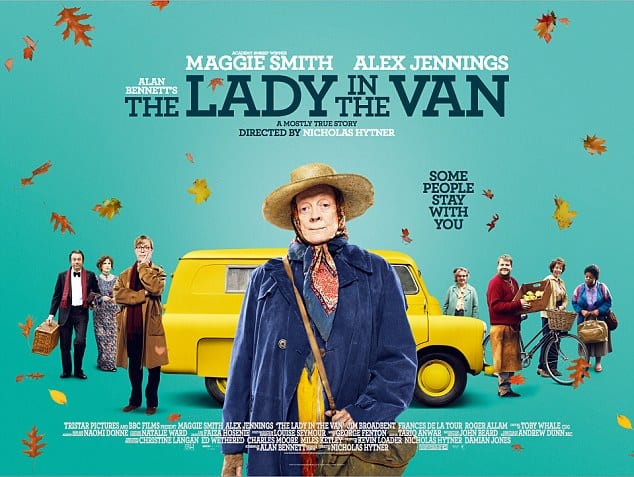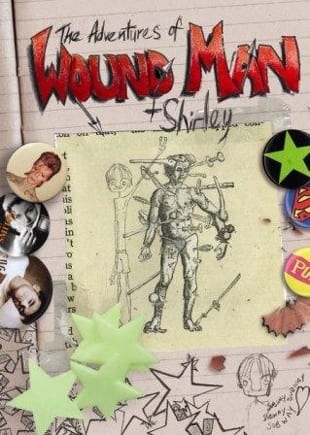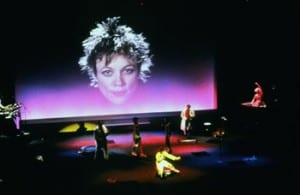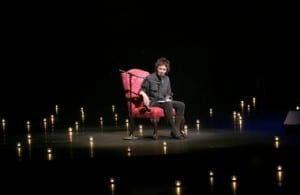I have been looking into language over the last week, reading books and watching plays in the hope of finding inspiration for my shows dialogue.
I watched Nicholas Hytner’s film The Lady in the Van (2015) and I was enthralled by the use of language. The words within this film were so satisfyingly beautiful, yet witty and piercing at the same time. The use of language from the character of Alan Bennett, a Northern writer, displayed much of the descriptive language I want to include in my own piece. His creative use of adjectives, juxtaposed with harsh swear words, brought something quite beautiful to the not-so-beautiful meaning of the sentence. I really liked the way that Haytner wrote the dialogue for this movie, however much of it was based on the actual writer Alan Bennett’s book titled the same The Lady in the Van (1989). I looked further into his writings and have taken a lot from the way he powerfully yet poetically describes situations.
This descriptive use of language reminded me of Chris Goode’s play The Adventures of Woundman and Shirley (2011) that we read in class. Although I don’t particularly enjoy the play, I did acknowledge Goode’s fantastic ability to bring situations to life through language. He uses descriptive detailed metaphors with a sprinkling of nonsense, for example, ‘All over his body: Weapons, sticking out at crazy angles like the cocktail sticks in a cheese and pineapple hedgehog at a little kids birthday party. His whole body a torture chamber’ (Goode, 2001, 7).
An example of the language in The Adventures of Woundman and Shirley (2011)
(Hull Truck Theatre, 2012)
An example of the language in The Lady in the Van (2015)
(Movieclips Coming Soon, 2015)
Listening to the poetic nature of the language from this play and film lead me to look into poetry. I stumbled black upon a poem that I read during GCSE English in school, The Road Not Taken (1991) by Robert Frost and Louis Untermeyer. Whilst studying at school the poem had not relevance to me, it was simply another run-of-the-mill stock poem that all 17 year olds had to study. However after reading it again at an older age, and with the current emotional crossroads lingering in my mind, this poem suddenly makes so much sense and I would really like to incorporate this poem in the opening section of my performance:
Two roads diverged in a yellow wood, And sorry I could not travel both
And be one traveler, long I stood
And looked down one as far as I could To where it bent in the undergrowth;
Then took the other, as just as fair,
And having perhaps the better claim, Because it was grassy and wanted wear; Though as for that the passing there Had worn them really about the same,
And both that morning equally lay
In leaves no step had trodden black. Oh, I kept the first for another day!
Yet knowing how way leads on to way, I doubted if I should ever come back.
I shall be telling this with a sigh Somewhere ages and ages hence:
Two roads diverged in a wood, and I— I took the one less traveled by,
And that has made all the difference.
(Frost and Untermeyer, 1991)
Work cited
Frost, R., Untermeyer, L. (1991) The road not taken: a selection of Robert Frost’s poems. New York: H. Holt and Co.
Goode, C. (2001) The Adventures of Woundman and Shirley. London: Oberon Books.
Hull Truck Theatre (2012) The Adventures of Wound Man and Shirley. [online video] Available from https://www.youtube.com/watch?v=Ud5jsvC1x4g [Accessed 17 March 2016].
Movieclips Coming Soon (2015) The Lady in the Van movie clip – Move in day (2015) – Maggie Smith, Alex Jennings Movie HD. [online video] Available from https://www.youtube.com/watch?v=OnFs3DN1eNU [Accessed 17 March 2016].




